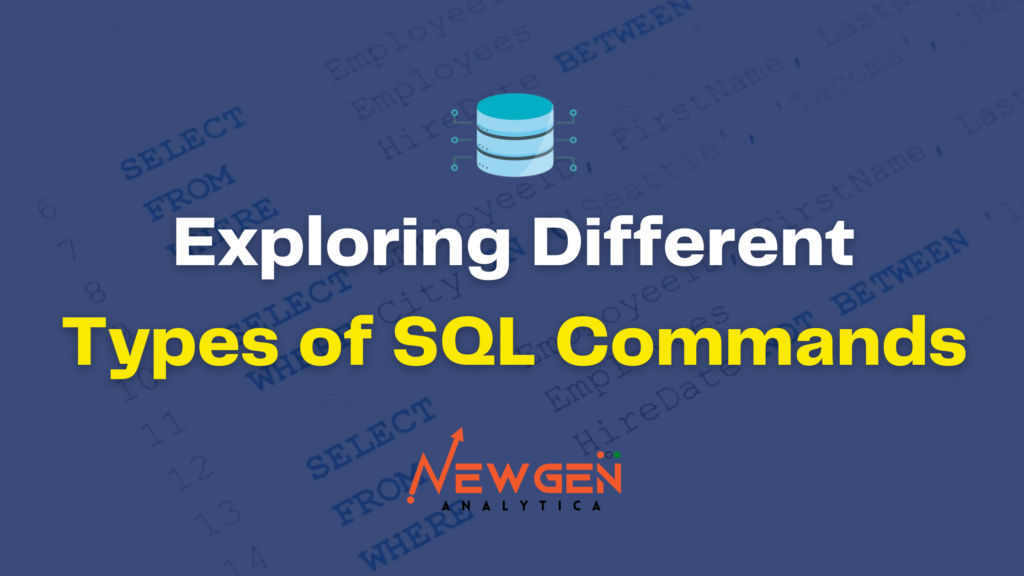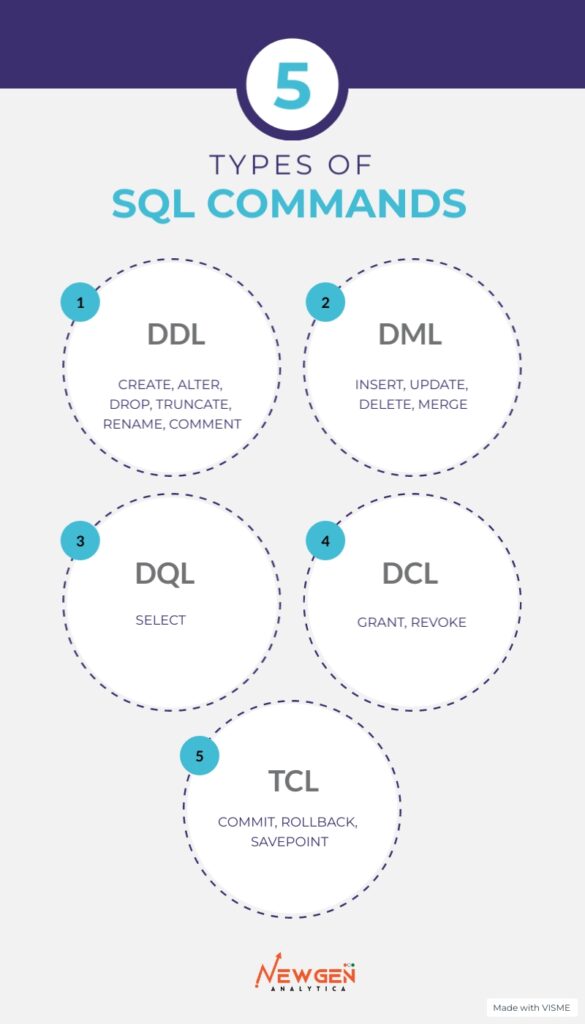
Exploring Different Types of SQL Commands
SQL (Structured Query Language) is a programming language used to manage and manipulate relational databases. It is used to perform tasks such as retrieving, inserting, updating, and deleting data from a database.
Relational databases store data in tables, which are composed of columns and rows. Columns represent the attributes or characteristics of the data, while rows represent individual records. SQL is used to interact with these tables by querying, modifying, and updating the data.
Different Types of SQL Commands
SQL commands can be categorized into four main types: Data Manipulation Language (DML), Data Definition Language (DDL), Data Control Language (DCL), and Transaction Control Language (TCL).

Data Manipulation Language (DML)
DML commands are used to manipulate data stored in a database. The most common DML commands are:
INSERT: This command is used to insert new data into a table. You can specify the values to be inserted, or you can insert data from another table.
UPDATE: This command is used to modify existing data in a table. You can specify which rows to update and what values to change.
DELETE: This command is used to delete data from a table. You can specify which rows to delete, or you can delete all the rows in a table.
Data Definition Language (DDL)
DDL commands are used to define the structure of a database. The most common DDL commands are:
CREATE: This command is used to create a new table, view, or other database object. You specify the columns, data types, and other properties of the object being created.
ALTER: This command is used to modify the structure of a table or other database object. You can add, modify, or delete columns, change data types, and perform other modifications.
DROP: This command is used to delete a table or other database object. Once a table or object is dropped, it cannot be recovered.
Data Query Language (DQL)
DQL commands are used to retrieve data from one or more tables in a database. The most common DQL command is:
SELECT: This command is used to retrieve data from one or more tables. It can be used with various clauses to filter and sort the data, and it can also be used to perform calculations and join multiple tables together.
Data Control Language (DCL)
DCL commands are used to control access to data in a database. The most common DCL commands are:
GRANT: This command is used to grant permissions to a user or role. You can specify which actions the user or role is allowed to perform on a particular table or object.
REVOKE: This command is used to revoke permissions from a user or role. You can remove the permissions that were previously granted.
Transaction Control Language (TCL)
TCL commands are used to control transactions in a database. Transactions are sequences of SQL statements that are executed as a single unit of work. The most common TCL commands are:
COMMIT: This command is used to permanently save changes made in a transaction. Once a transaction is committed, the changes cannot be rolled back.
SAVEPOINT: A savepoint is a marker within a transaction that allows you to roll back part of the transaction while leaving the rest of the changes intact.
ROLLBACK: This command is used to undo changes made in a transaction. If there is an error or problem with the transaction, you can use the ROLLBACK command to undo the changes and return the database to its previous state.
In addition to these basic SQL commands, there are also many advanced SQL commands and functions that can be used to perform complex operations on data in a database. Some examples include JOIN, UNION, GROUP BY, and HAVING.
I hope you liked this content, in the next content we shall discuss each category of commands in detail with different examples.
Happy Learning !!